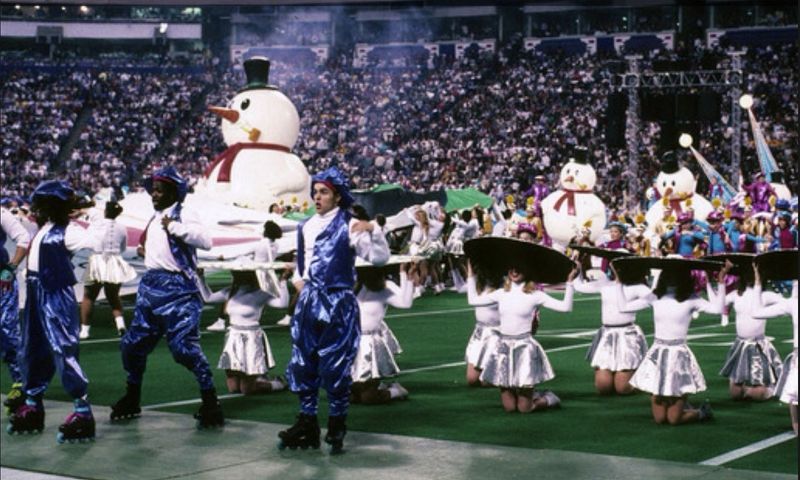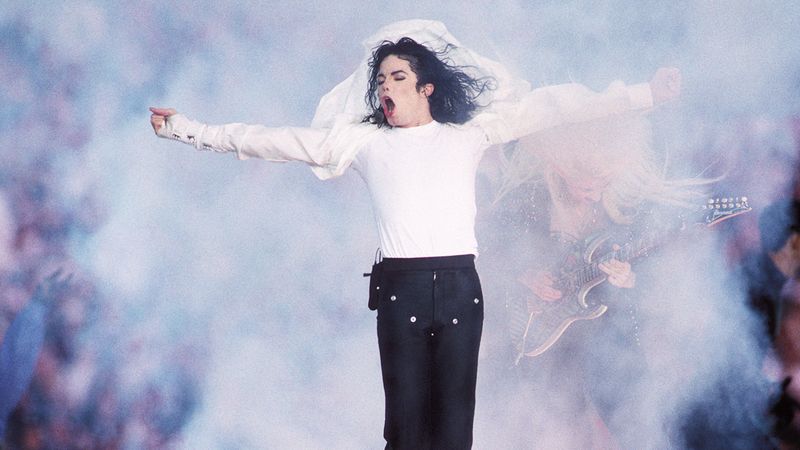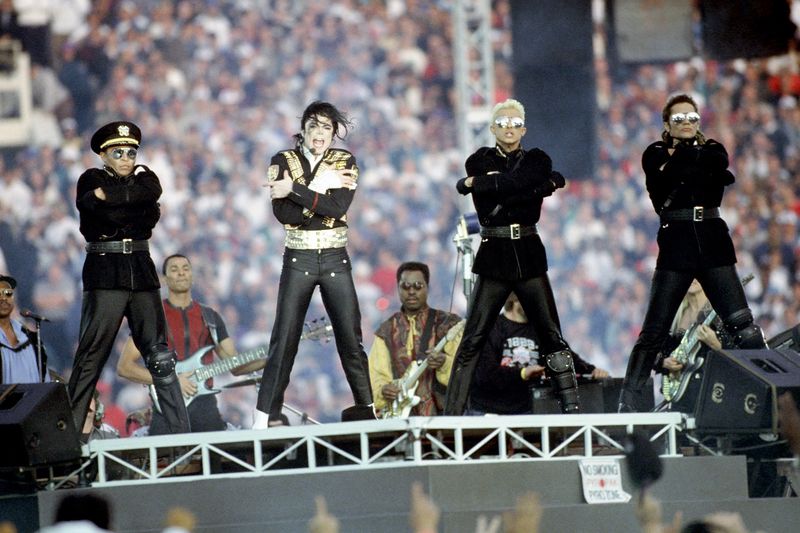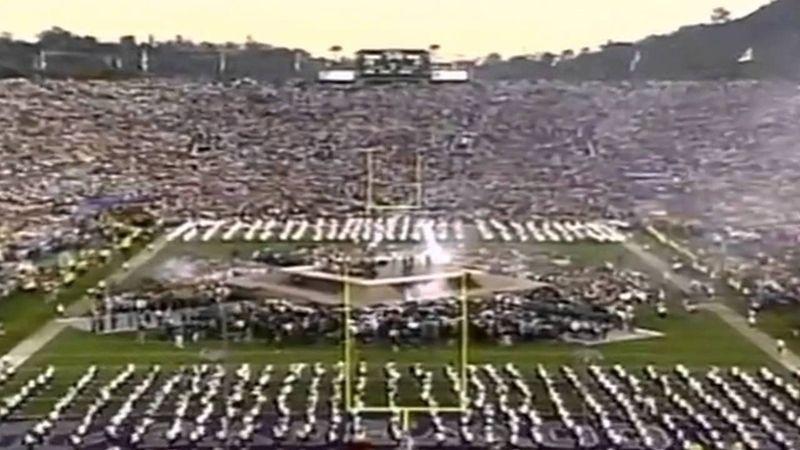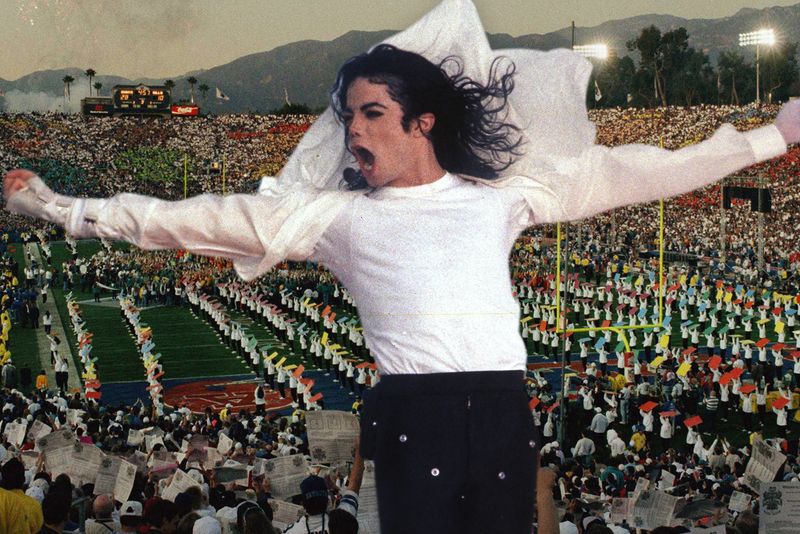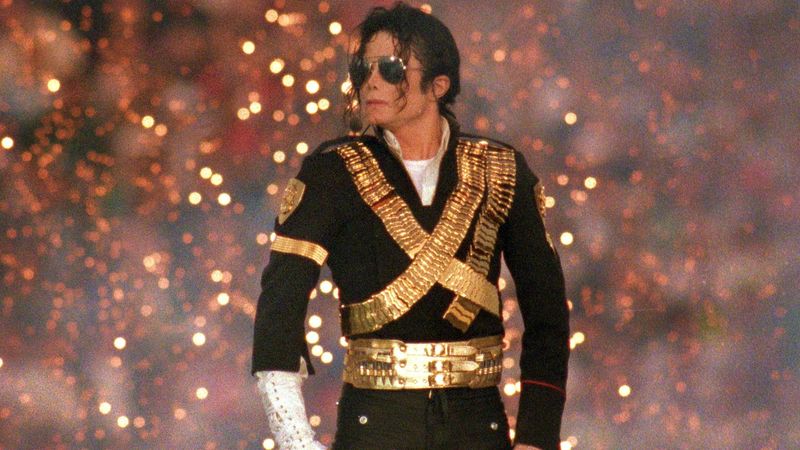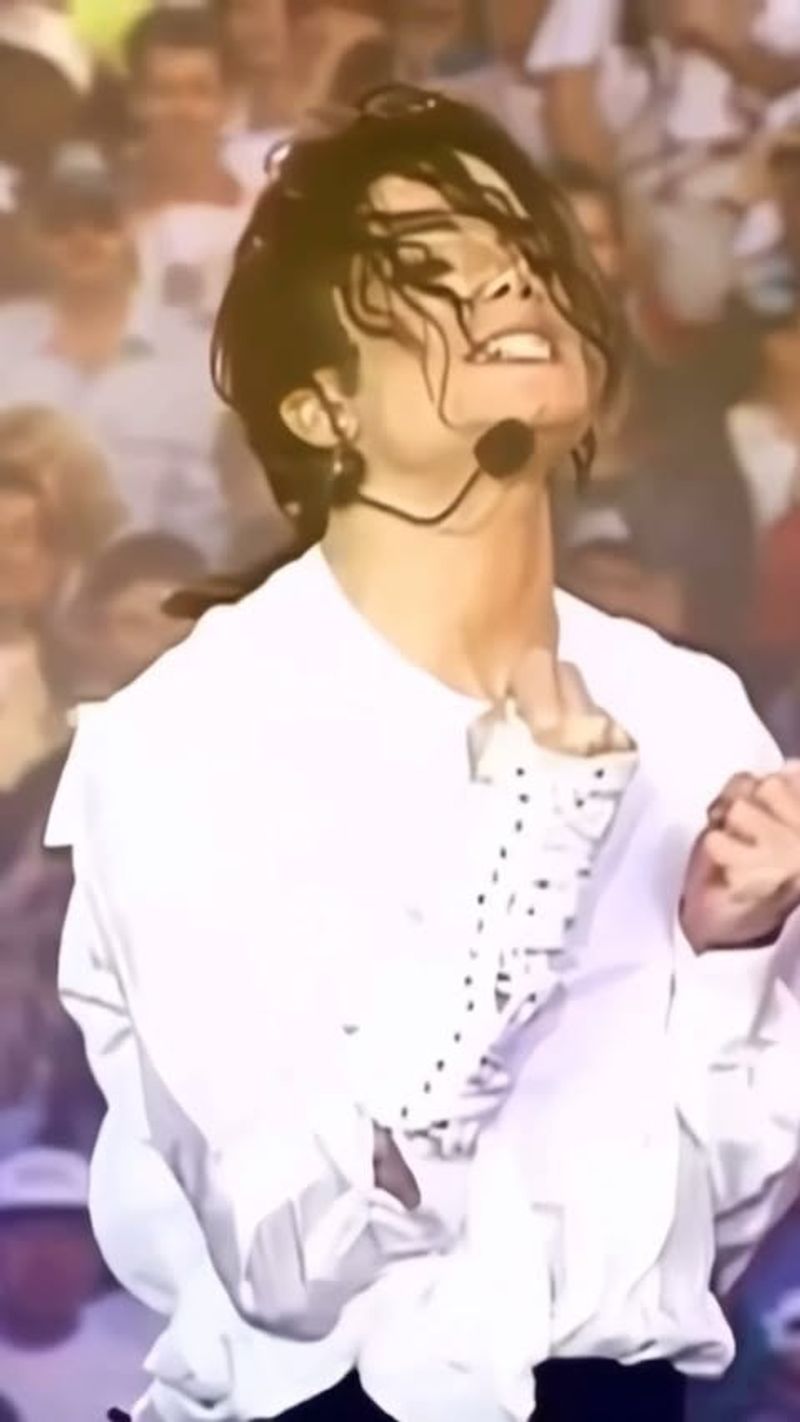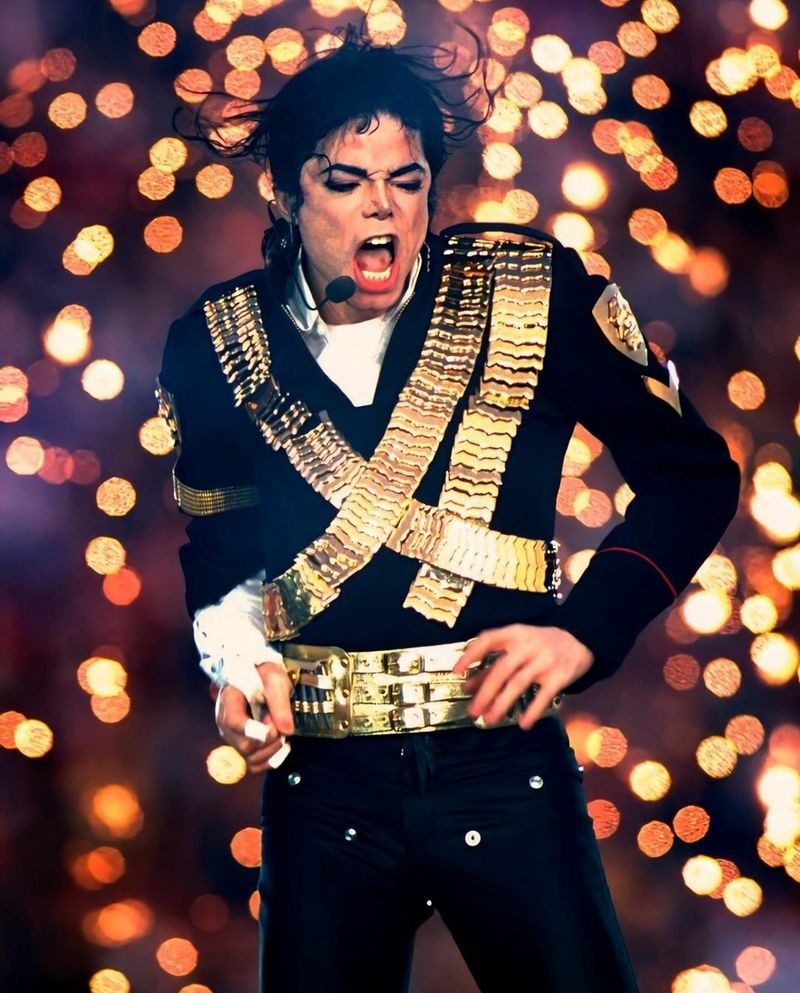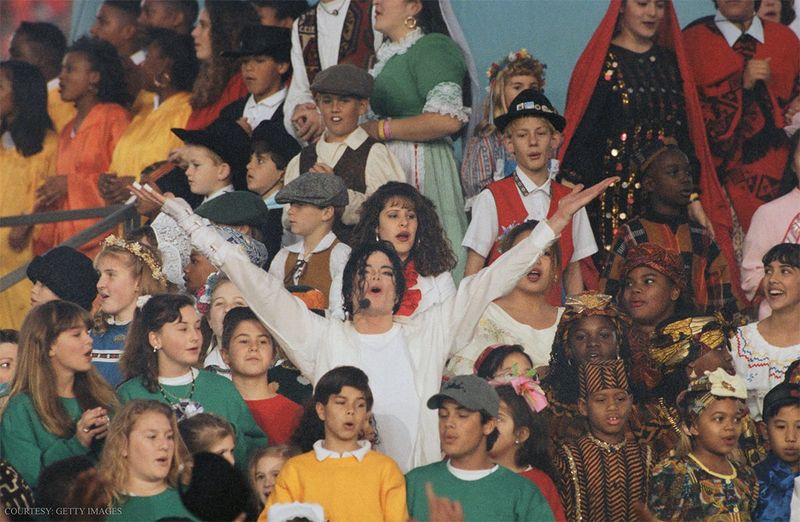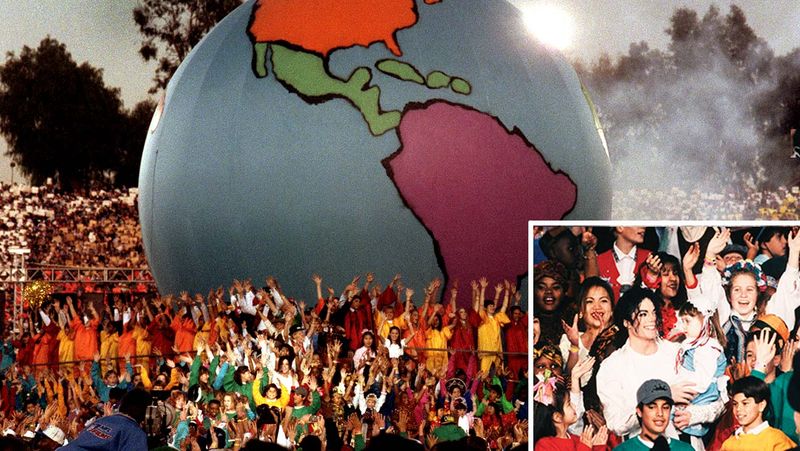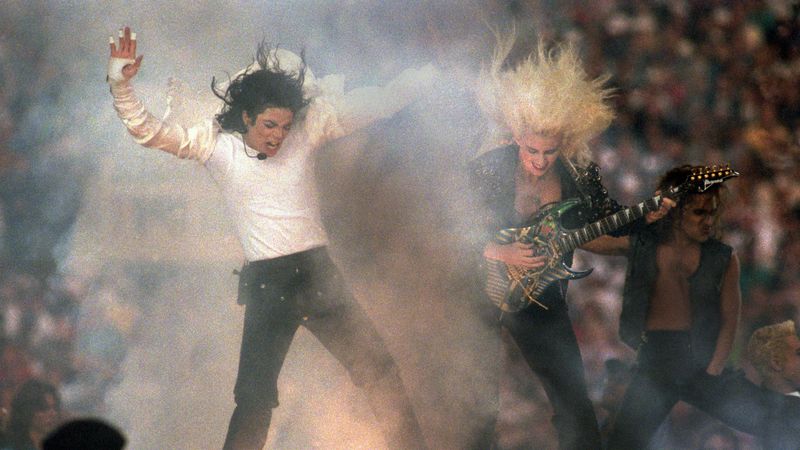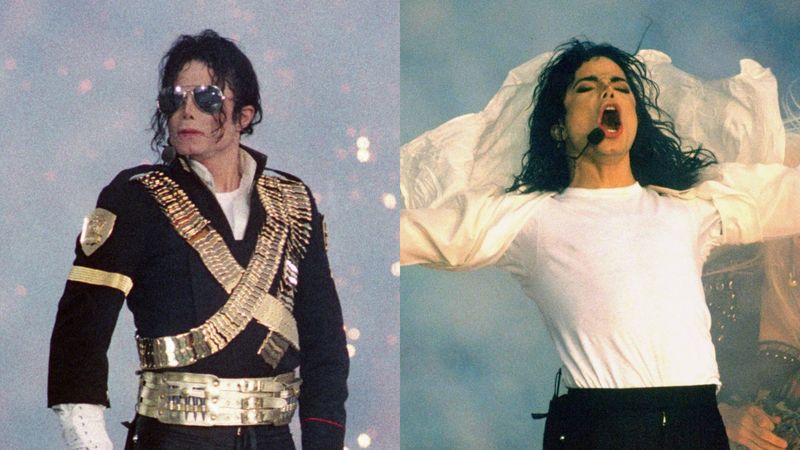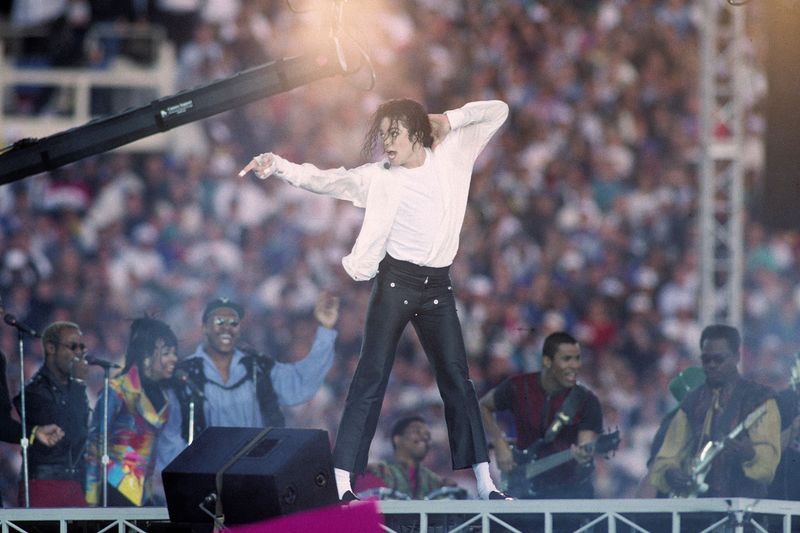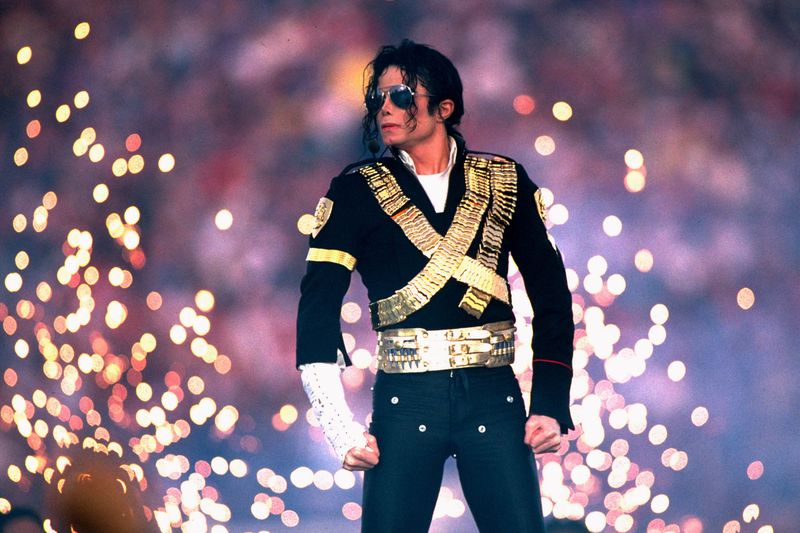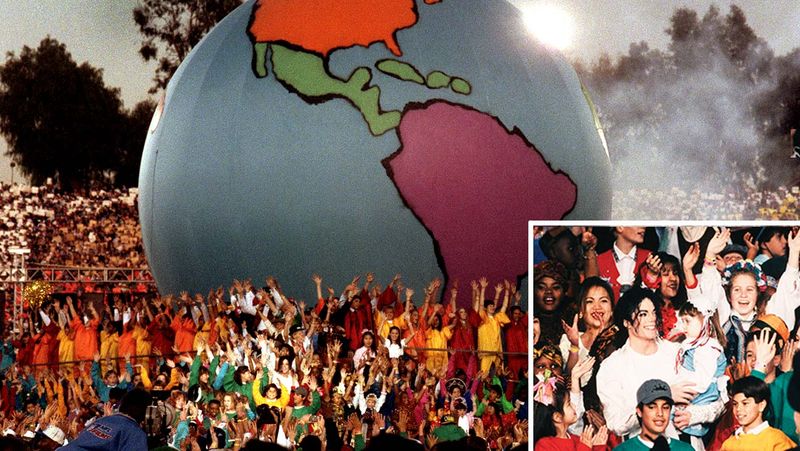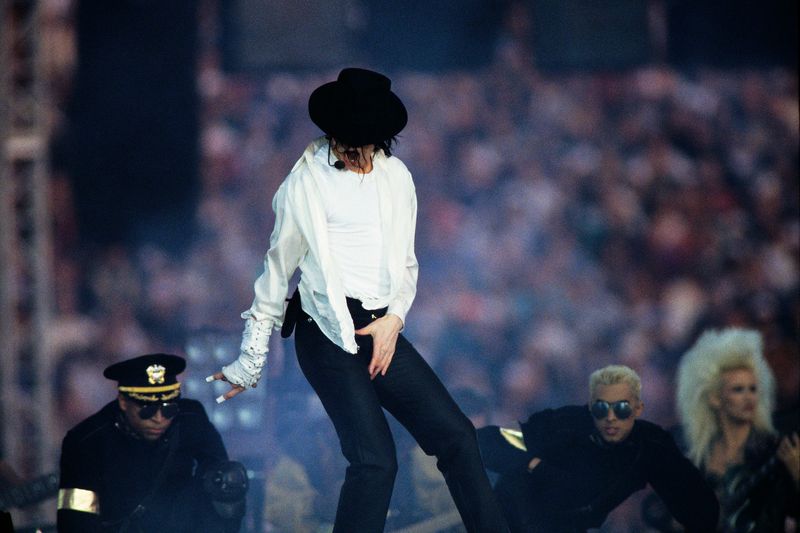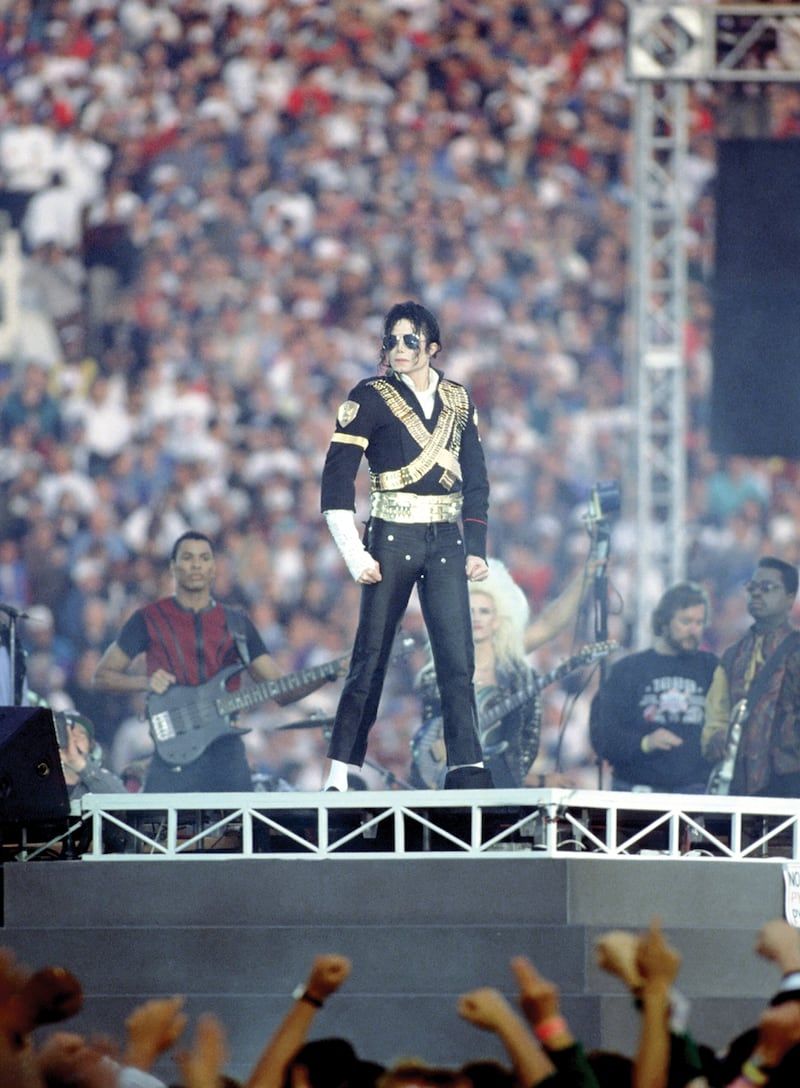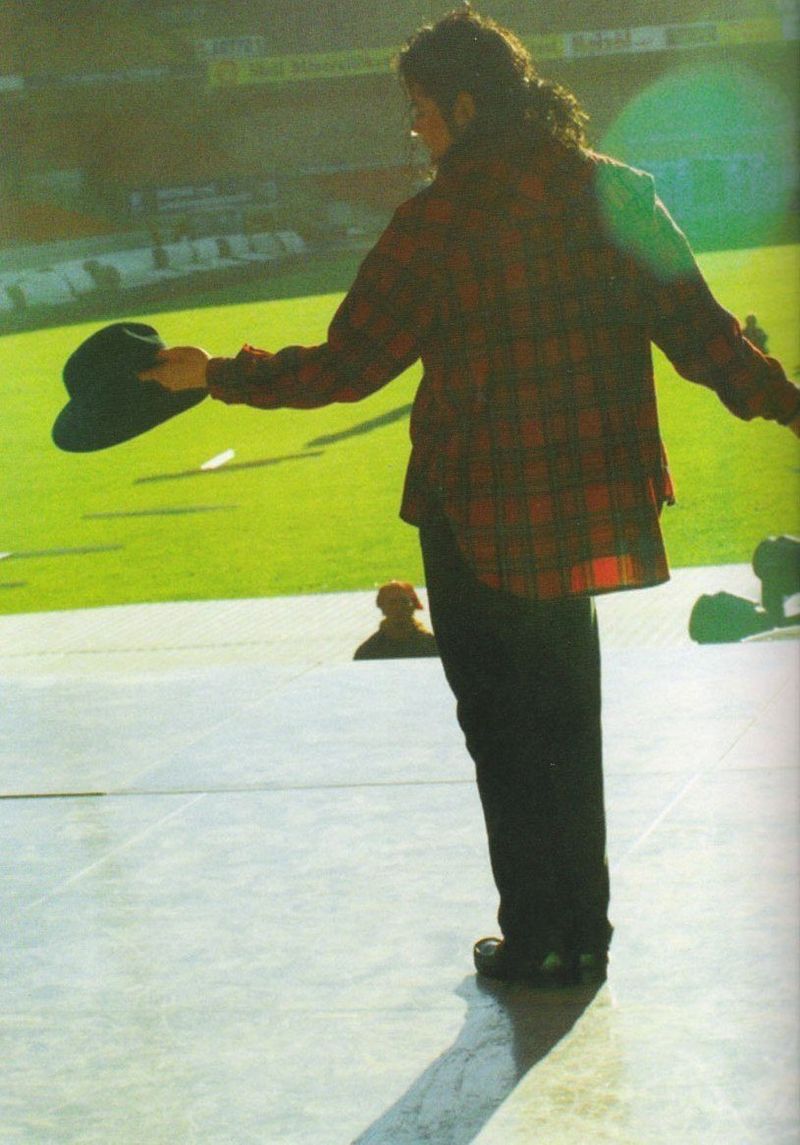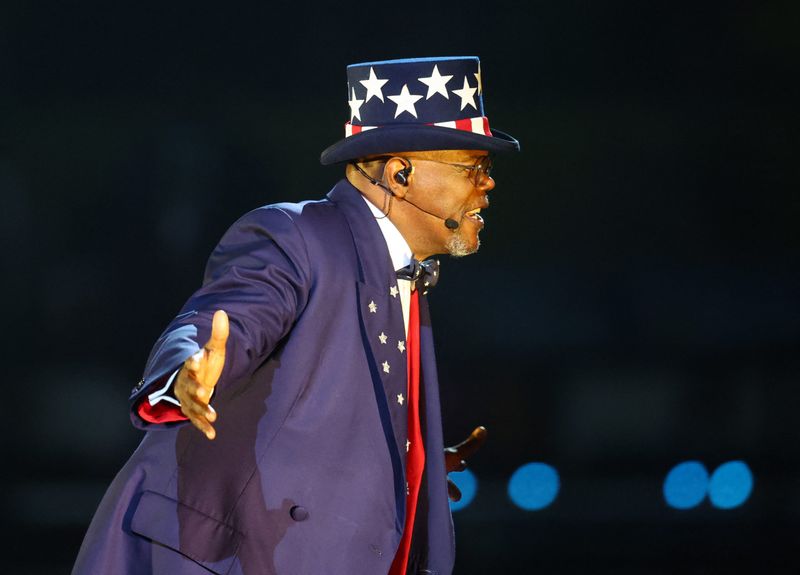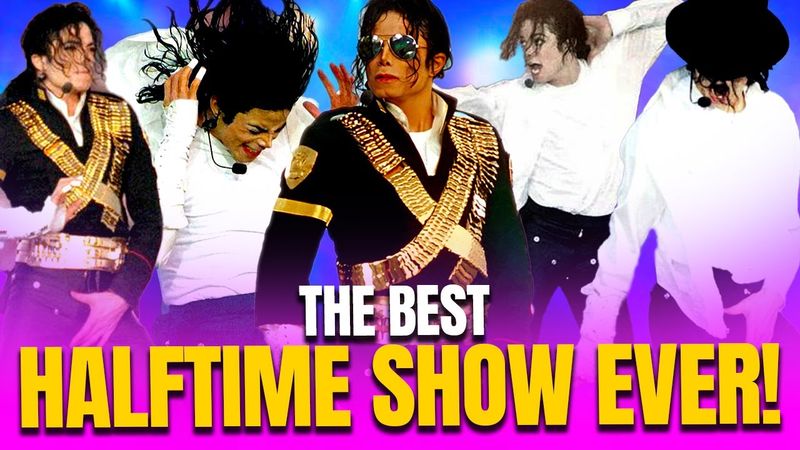Michael Jackson’s 1993 Super Bowl halftime show revolutionized the way audiences experience halftime entertainment.
The King of Pop’s performance remains iconic, remembered for its groundbreaking production and thrilling moments. This blog post explores 20 fascinating aspects of that unforgettable show.
1. The NFL Needed a Halftime Overhaul
In 1992, Fox’s “In Living Color” drew viewers from the Super Bowl halftime, pushing the NFL to revamp its halftime strategy. This led to the hiring of Michael Jackson, a star with the gravitas to captivate audiences and reclaim viewership.
The decision was pivotal. The stadium buzzed with anticipation, and the stakes were high. Jackson’s involvement marked a turning point, setting a new standard for halftime shows.
The NFL’s bold move paid off, forever altering how halftimes were perceived. It was the beginning of a new era in sports entertainment.
2. Michael Jackson Didn’t Perform for Free
Michael Jackson didn’t accept a performance fee for his halftime show, but he wasn’t entirely uncompensated. The NFL and Frito-Lay made a $100,000 donation to his Heal the World Foundation. Additionally, he received commercial slots to promote his Heal L.A. campaign.
This arrangement highlighted Jackson’s commitment to his philanthropic endeavors. By leveraging his star power, he turned a massive platform into a force for good, advocating for causes close to his heart.
It was a shrewd blend of entertainment and altruism, showcasing Jackson’s multifaceted purpose on the world stage.
3. A Stage Built in Under 4 Minutes
Constructing a 10-ton stage for Michael Jackson’s performance was a feat of engineering and speed. The crew had less than four minutes to set it up, ensuring no damage occurred to the Rose Bowl field.
This astonishing accomplishment required meticulous planning and precision. The swift, seamless construction process left the audience in awe. It highlighted not just the show’s grandeur but also the behind-the-scenes dedication.
The urgency and coordination displayed were testaments to the crew’s expertise, ensuring the performance went off without a hitch, adding to the spectacle’s allure.
4. A Huge Volunteer Crew Was Needed
Over 250 volunteers were essential for the success of Jackson’s halftime show. These dedicated individuals assembled and dismantled the massive stage in mere minutes. Their collective effort showcased a remarkable spirit of teamwork and commitment. Each volunteer played a vital role in executing a flawless performance.
Their enthusiasm and precision reflected the larger-than-life nature of the event.
The volunteers’ work was as crucial as any performer’s, ensuring the show ran smoothly. Their contribution exemplified how collaborative effort can create magic, leaving an indelible mark on one of history’s most memorable shows.
5. The Setlist Had to Be Perfect
Crafting the perfect setlist was paramount for Michael Jackson’s halftime show. Every song was chosen to balance entertainment with impactful messages. Hits like “Jam,” “Billie Jean,” and “Black or White” were strategically included to captivate audiences. The setlist was more than just a musical journey; it was a statement.
Each track resonated with themes of unity and social awareness. The meticulous selection process ensured the performance wasn’t just memorable but meaningful.
It was about creating a narrative that transcended the moment, leaving a lasting impression on viewers worldwide.
6. Michael Jackson’s Epic Entrance Shocked the World
Michael Jackson’s entrance at the 1993 Super Bowl was legendary. Appearing on stage, he stood motionless for nearly two minutes, creating an electric tension. The silence was palpable, as fans and viewers worldwide awaited his first move.
This calculated pause heightened anticipation, showcasing Jackson’s mastery of stage presence. It was a dramatic introduction that few could pull off, underscoring his status as an unparalleled performer.
The entrance set the tone for a performance that would be talked about for decades, highlighting Jackson’s ability to command attention and captivate an audience.
7. He “Teleported” Across the Stadium
One of the most memorable illusions during Jackson’s halftime show was his “teleportation” trick. Through the clever use of body doubles, Jackson appeared to pop up in different areas of the stadium, creating a magical effect.
This creative execution left the audience astounded, adding an element of surprise and wonder to the performance. The illusion was a testament to the innovative approach that defined Jackson’s shows.
It was a perfect blend of showmanship and technology, keeping viewers engaged and mystified. Such moments exemplified Jackson’s genius in delivering unforgettable live experiences.
8. The Setlist Was Full of Hits
Michael Jackson’s halftime performance included a medley of some of his greatest hits. Starting with “Jam,” he transitioned into “Billie Jean,” complete with his iconic moonwalk, followed by “Black or White.”
The set continued with a heartfelt rendition of “We Are the World,” accompanied by a choir, and concluded with “Heal the World,” featuring a massive inflatable globe. Each song was chosen to enhance the overall narrative, celebrating Jackson’s legacy while conveying powerful messages of unity and peace.
The performance was a showcase of his unparalleled musical talent and showmanship.
9. Over 3,500 Kids Performed with Him
A highlight of Jackson’s halftime show was the participation of over 3,500 children. The young performers joined him for the finale, singing “Heal the World.” Their presence on the field added a touching element to the performance, emphasizing themes of hope and unity.
The sight of thousands of children singing alongside Jackson was both moving and inspiring. It was a powerful visual representation of the song’s message, resonating with audiences worldwide.
The collaboration underscored Jackson’s ability to bring people together, regardless of age, in a shared moment of musical magic.
10. A Giant Inflatable Globe Stole the Show
During the performance of “Heal the World,” a giant inflatable globe emerged on the field, becoming a showstopper. This visually stunning moment symbolized global unity and peace, aligning perfectly with the song’s message.
The globe’s appearance was a striking visual metaphor, reinforcing the performance’s underlying themes. It served as a reminder of the power of music to transcend boundaries and bring people together.
The inflatable globe was not just a spectacle; it was a poignant symbol of hope, leaving a lasting impact on viewers and enhancing the emotional depth of the show.
11. First Halftime Show to Get Higher Ratings Than the Game
Michael Jackson’s halftime performance achieved an unprecedented feat. For the first time in Super Bowl history, the halftime show garnered higher ratings than the actual game. This milestone underscored the immense appeal of Jackson’s performance, drawing viewers who might not typically watch football.
It was a testament to Jackson’s universal popularity and the show’s mass appeal. The achievement marked a turning point for future halftime shows, setting a new benchmark for entertainment value.
Jackson’s ability to captivate such a vast audience highlighted his status as a global icon, reshaping the halftime show landscape.
12. 4 Million People Watched in the U.S.
The 1993 Super Bowl halftime show attracted an astounding 133.4 million viewers in the United States alone. This staggering number reflected the broad appeal of Michael Jackson and the mass anticipation for his performance. It was a broadcast event of epic proportions, capturing the attention of households across the nation.
The show’s remarkable viewership demonstrated Jackson’s ability to unite people through music. His presence turned the Super Bowl into an event that transcended sports, attracting a diverse audience and setting new records in television viewership history.
It was truly a cultural phenomenon.
13. 3 Billion People Watched Worldwide
Globally, Michael Jackson’s halftime performance was viewed by an estimated 1.3 billion people. This incredible reach made it one of the most-watched live events in history. The worldwide audience underscored Jackson’s status as an international superstar and the universal appeal of his music.
It was a moment that connected people across continents, transcending cultural and linguistic barriers.
The global viewership highlighted the power of entertainment in uniting diverse audiences. Jackson’s performance became a shared experience for millions, further solidifying his legacy as a performer who could captivate the world.
14. Michael Jackson’s Album Sales Skyrocketed
Following the iconic halftime show, sales of Michael Jackson’s “Dangerous” album surged. The performance reignited interest in his music, propelling the album back into the Top 10 of the Billboard 200 chart.
This commercial boost underscored the enduring appeal of Jackson’s artistry. His halftime appearance didn’t just entertain; it served as a powerful promotional platform. The renewed interest in his music highlighted the performance’s impact beyond the stadium.
It was a testament to Jackson’s ability to engage audiences and drive album sales, reaffirming his position as a music industry titan.
15. Critics Called It the Best Halftime Show Ever
Media outlets and fans alike hailed Michael Jackson’s 1993 performance as the best halftime show ever. Critics praised its innovative production, captivating setlist, and Jackson’s charismatic presence. Many considered it a benchmark for future shows.
The accolades underscored the show’s impact on both entertainment and sports. Jackson’s ability to elevate a sports intermission into a must-watch spectacle was widely recognized. The performance set a high bar, with many still referencing it as the standard for excellence.
It was a breakthrough moment that redefined what was possible for Super Bowl halftimes.
16. The NFL Had Never Paid This Much for a Halftime Show
The production demands for Michael Jackson’s halftime show resulted in an unprecedented budget for the NFL. The show’s cost reached millions, reflecting Jackson’s high standard for performance quality and spectacle.
This investment signaled a shift in how the NFL viewed halftime entertainment. The significant financial outlay demonstrated the league’s commitment to making halftime a central event of the Super Bowl experience. Jackson’s involvement justified the expenditure, as the return on investment was evident in the ratings and acclaim.
The financial commitment paved the way for future high-profile halftime performances.
17. Security Was Extremely Tight
Given Michael Jackson’s superstar status, security at the 1993 Super Bowl was exceptionally tight. Concerns about crowd control and safety at the Rose Bowl led to heightened measures. Jackson’s team insisted on stringent protocols to ensure his safety and the audience’s well-being.
The extensive security measures underscored the magnitude of the event. The precautions highlighted the challenges of managing such a high-profile performance. Despite the pressure, the show proceeded without incident, showcasing the effectiveness of the security teams.
The meticulous planning ensured a safe and successful halftime experience.
18. It Took Weeks of Rehearsals
Michael Jackson’s commitment to perfection was evident in the weeks of rehearsals leading up to the Super Bowl. He practiced tirelessly, honing every detail to ensure a flawless performance.
The meticulous preparation highlighted Jackson’s dedication to his craft. Each rehearsal was an opportunity to refine the show, making it as impactful as possible. The effort paid off, resulting in a seamless and electrifying performance.
Jackson’s work ethic and attention to detail were integral to the halftime show’s success, demonstrating the level of professionalism required to create an unforgettable live event.
19. It Inspired Future Super Bowl Halftime Shows
Michael Jackson’s iconic 1993 performance set a new precedent for future Super Bowl halftime shows. His blend of music, spectacle, and star power redefined expectations. After his appearance, the NFL consistently sought A-list performers, transforming halftime into a much-anticipated event. Jackson’s showmanship inspired a focus on high production values and memorable moments.
The performance marked a shift from traditional entertainment to must-see TV, influencing how the league approached halftime.
Jackson’s influence is evident in the continued pursuit of big names and elaborate presentations, a lasting legacy of his groundbreaking show.
20. Michael Jackson Changed Super Bowl Halftime History Forever
Before Michael Jackson, Super Bowl halftime shows were considered secondary to the game itself. His 1993 performance changed that perception forever. It elevated halftime to a prime entertainment slot, drawing viewers specifically for the spectacle.
Jackson’s ability to captivate and entertain on such a grand scale redefined the role of halftime shows. His influence transformed them into cultural milestones, eagerly anticipated by fans around the world.
The shift in focus from mere intermission to headline performance is a testament to Jackson’s impact. He forever altered how the Super Bowl halftime is viewed.

